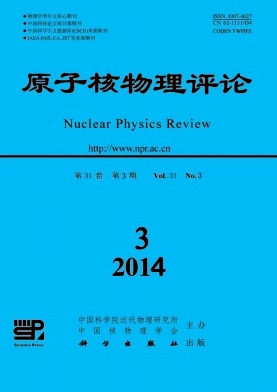Study on Thermal Shock Damage to Injector II of China ADS Project
doi: 10.11804/NuclPhysRev.31.03.385
- Received Date: 1900-01-01
- Rev Recd Date: 1900-01-01
- Publish Date: 2014-09-20
Abstract: Because of injecting an out-of-control beam pulse, thermal shock damage to the accelerator may well cause a failure of focusing and steering elements. In order to prevent RFQ accelerator,superconducting cavities and other accelerator components from thermal damage, t is essential to conduct a quantitative evaluation of the thermal stresses induced in the material during the thermal shock. The present study in this paper proposed a novel method to evaluate the thermal stresses quantitatively, which can clarify the characteristics of thermal shock of several materials, such as OFHC, SUS304 and Niobium. Transitional thermal stress is investigated by three dimensional nite element method (FEM) to obtain the temperature distribution for three materials at the beam incident angle of 90°. Finally the simulation results prove that the machine protect system response time meets the requirement when the allowable injection time is de ned as 20 μs.
| Citation: | HE Shoubo, HE Yuan, WANG Zhijun, YANG Yangyang, ZHANG Shenghu, ZHAO Hongwei. Study on Thermal Shock Damage to Injector II of China ADS Project[J]. Nuclear Physics Review, 2014, 31(3): 385-390. doi: 10.11804/NuclPhysRev.31.03.385 |






 甘公网安备 62010202000723号
甘公网安备 62010202000723号 DownLoad:
DownLoad: